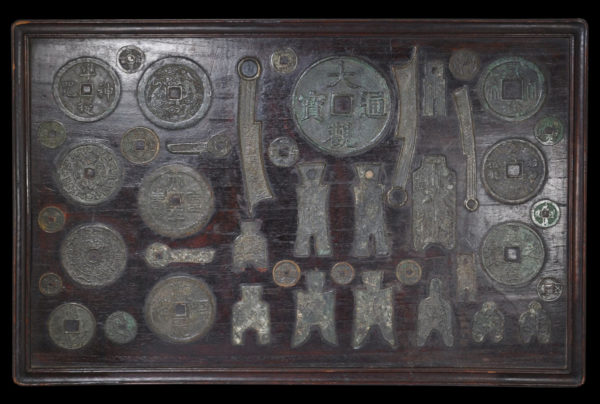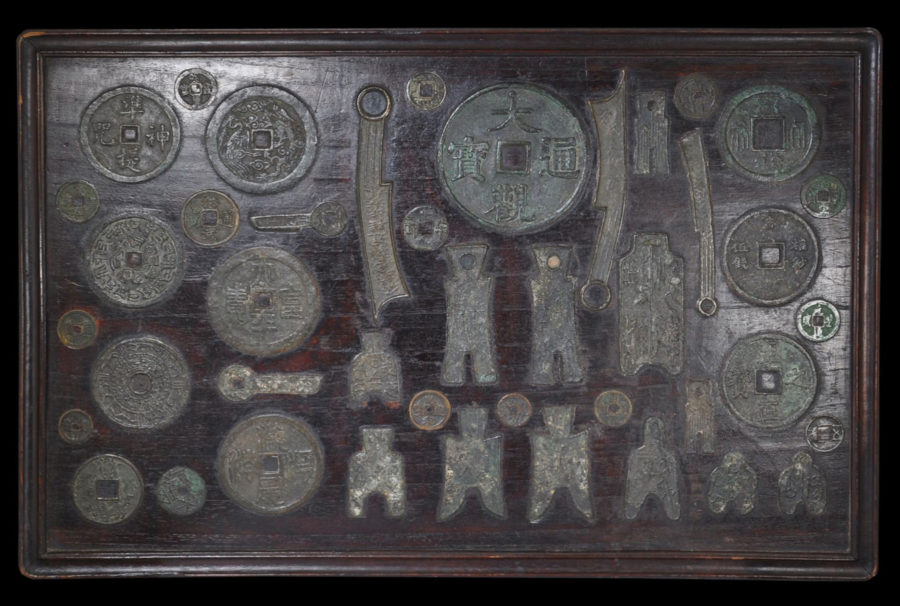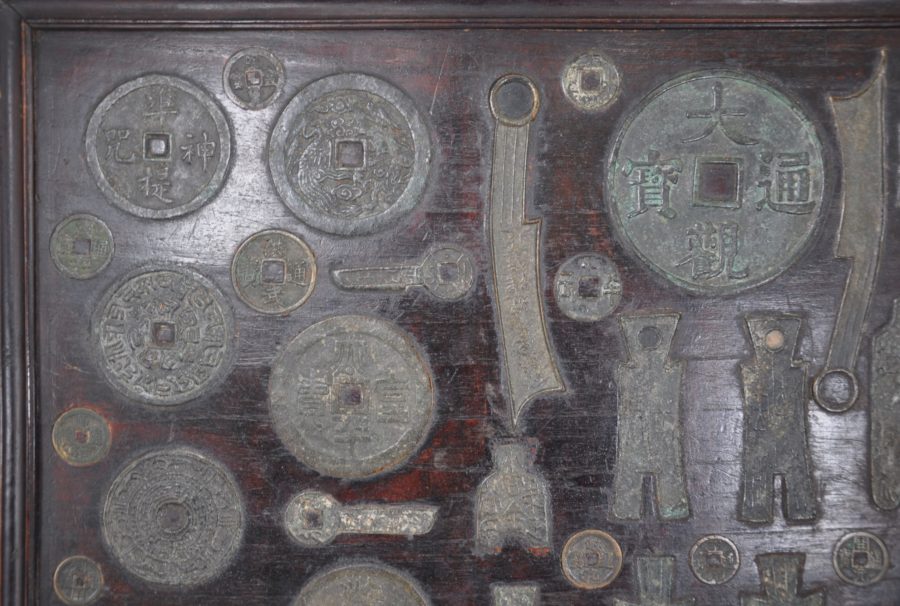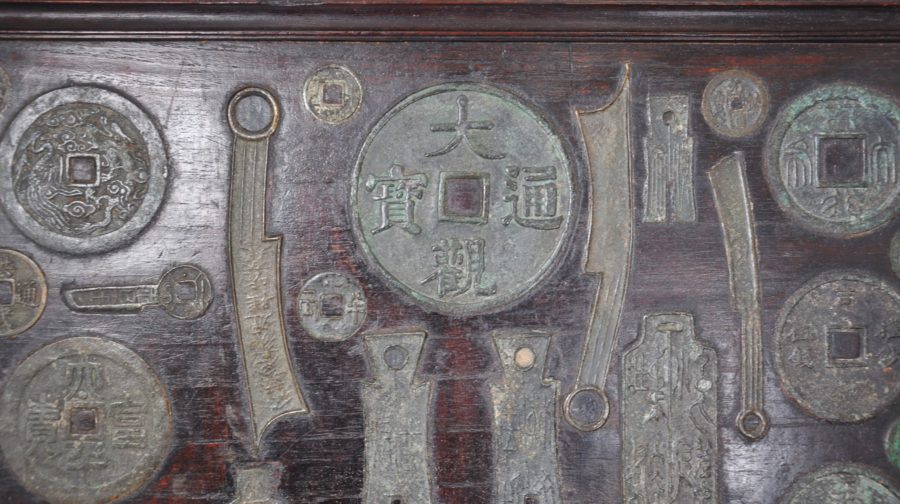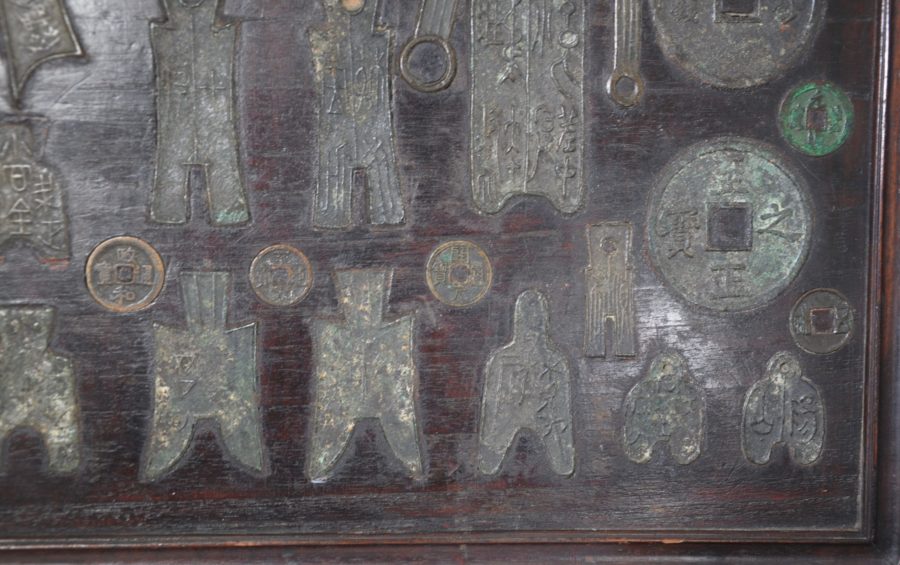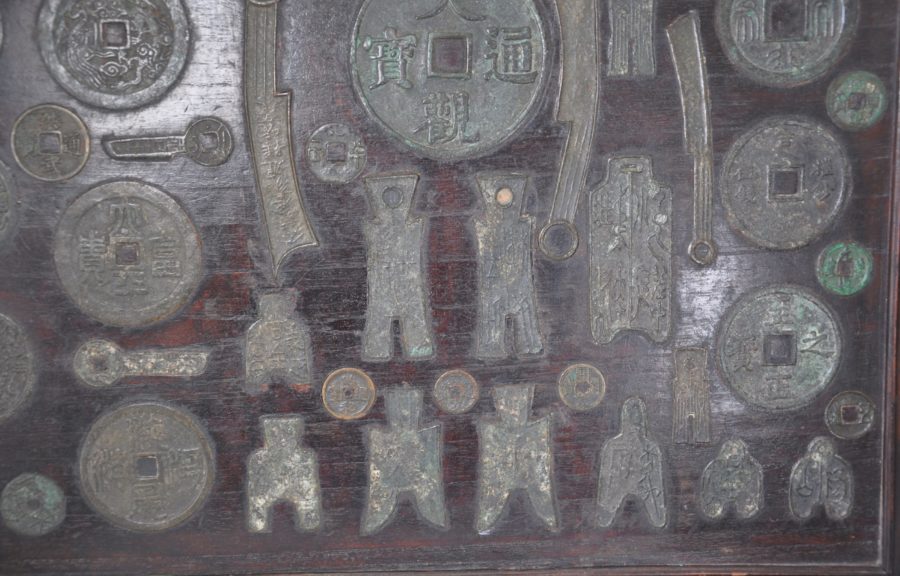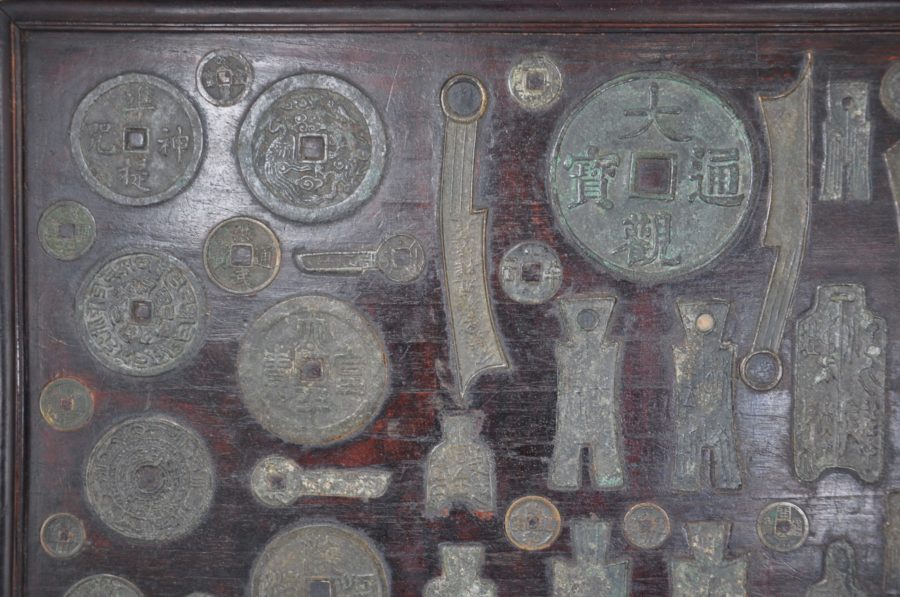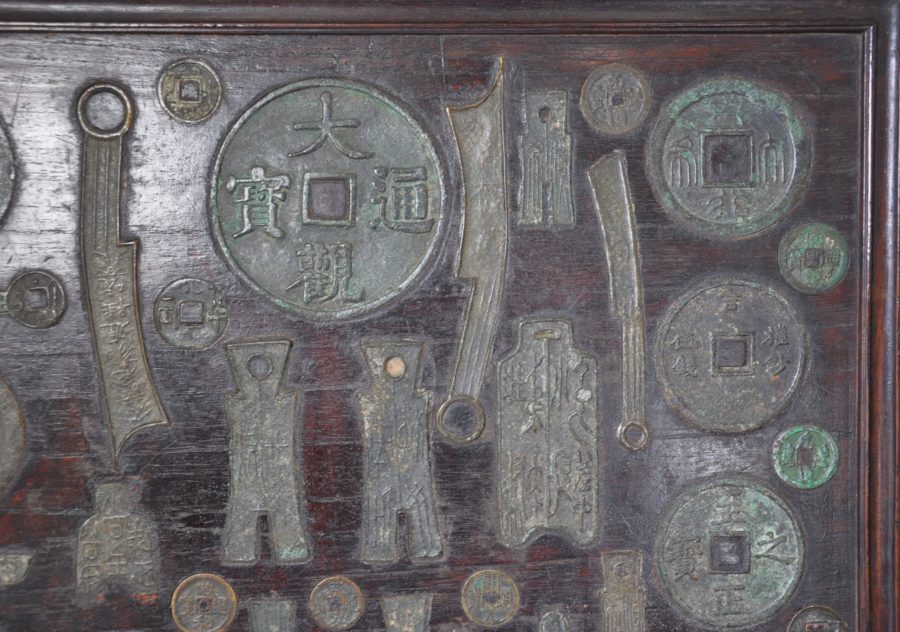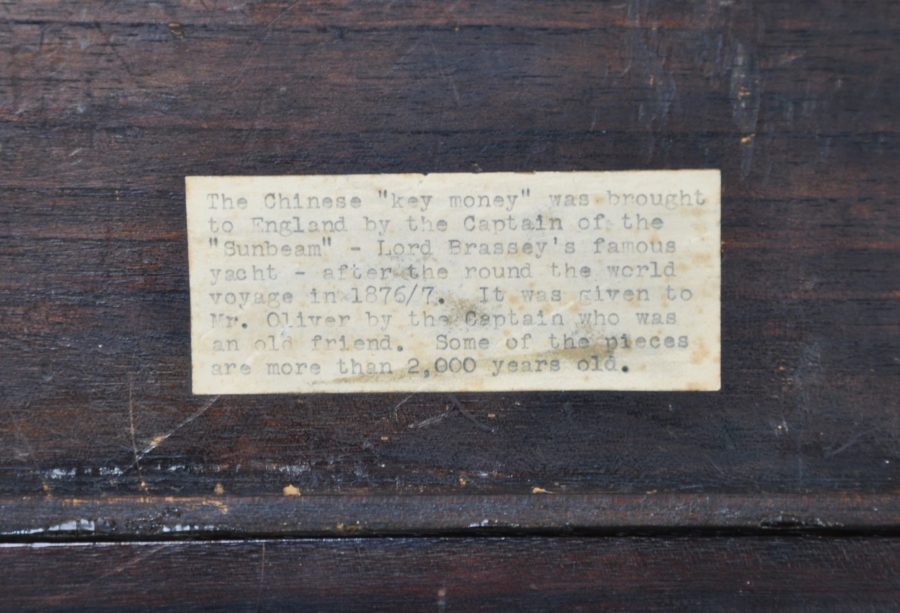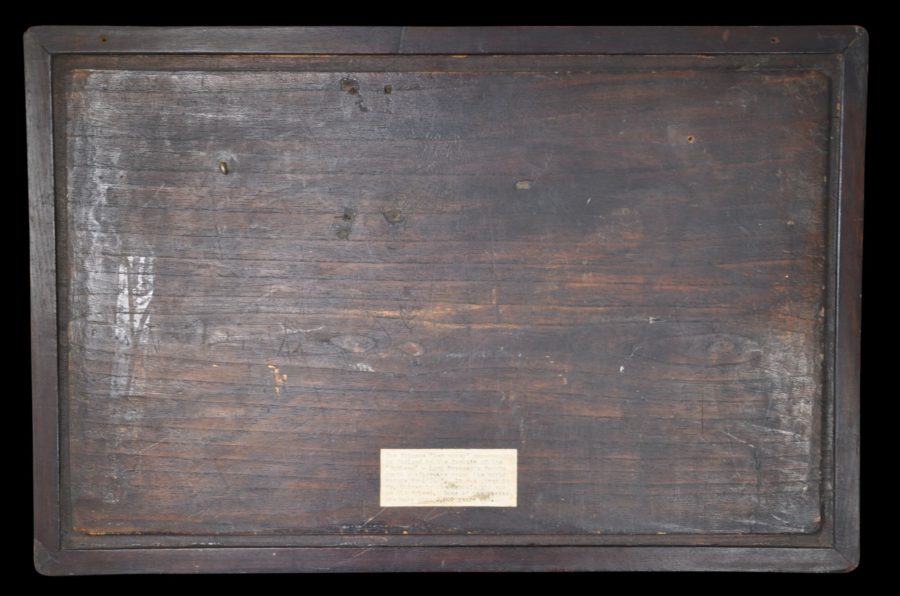Enquiry about object: 6412
Victorian-Era Display Panel of Ancient Chinese Coins & Tokens
China 19th century
dimensions of frame: 58cm x 37.8cm
Provenance
private collection, UK; the coins are believed to have been collected in China in the 1870s
This frame of darkened blond wood holds 43 early coins and tokens, all from China, and mostly purporting to be from China’s Warring States period or more than 2,000 years ago when China was not a unified whole but a series of small kingdoms and fiefdoms, many of which issued their own currency. The coins have been mounted into cavities carved into the wood. Most are probably replicas from the 19th century.
Among the coins represented are:
- Qi knife coins (400-220BC) – these are from the State of Qi
- Ming knife coins (400-220BC) – the name ‘Ming’ relates not the the much later dynasty but to a character that appears on the coin. This coin if from the State of Yan.
- Arched foot spade coins (400-300BC) – these are associated with the State of Liang (also known as Wei)
- Dang Jin-type square foot spade coins (35o-250BC) – believed to have come from the State of Chu
- Pointed foot spade coins (350-250BC) – associated with teh State of Zhou
- Round foot spade coins (4-5th century BC) – associated with either the States of Qin, Zhao or Zong Shan
- Early round coins – (350-220BC) – associated with the State of Liang
- Ban Liang coins (300-200BC) – from united China’s first dynasty, the Qin Dynasty
- Chi Ze Wu Zhu coins (115-113BC) – from the Western Han Dynasty
- Kai Yuan coins (618-907AD) – from the Tang Dynasty
- Mongol Khan coins (13th century) – used by the Mongols before the establishment of the Yuan Dynasty
- Large coin with square hole – yi qian wu fen – dates to the rule of Emperor Shun (1333-68). This is probably one the scarcest and most valuable coins in the collection.
In addition to coins, there are picturesque tokens which might have served as presentation pieces and also as amulets, These tend to have been cast with pictures as well as script. One token for example is decorated with a phoenix and a dragon.
An old typewriter-written label attached to the reverse reads: ‘The Chinese ‘key money’ was brought to England by the Captain of the ‘Sunbeam’ – Lord Brassey’s famous yacht – after the round the world voyage in 1876-7. It was given to an old friend. Some of the pieces are more than 2,000 years old.’
Lord Thomas Brassey owned the luxuriously-appointed yacht Sunbeam which he and his wife, the writer Anna Brassey, sailed to many parts of the world. Anna wrote various books about their travels including the best-selling A Voyage in the Sunbeam. She died from Malaria aboard the Sunbeam in 1887 at the age of 47. She and her husband amassed a large collection of ethnographic and other material from their travels. The golden figurehead of the yacht depicting the couple’s daughter is at the National Maritime Museum, Greenwich, UK.
China was one of the earliest areas in the world to use coinage. The practice evolved over thousands of years largely in isolation of outside influence.
The frame is in fine condition. It is open rather than being covered with glass. Overall, this is a very interesting souvenir from 19th century China that would have graced a Victorian gentleman’s library. It would have been quite a conversation piece.
References
Hartill, D., Cast Chinese Coins, 2nd ed., New Generation Publishing, 2017.
Liu, Y. (ed.), Liaoning Museum, Chang Zheng Publishers, 2008.


